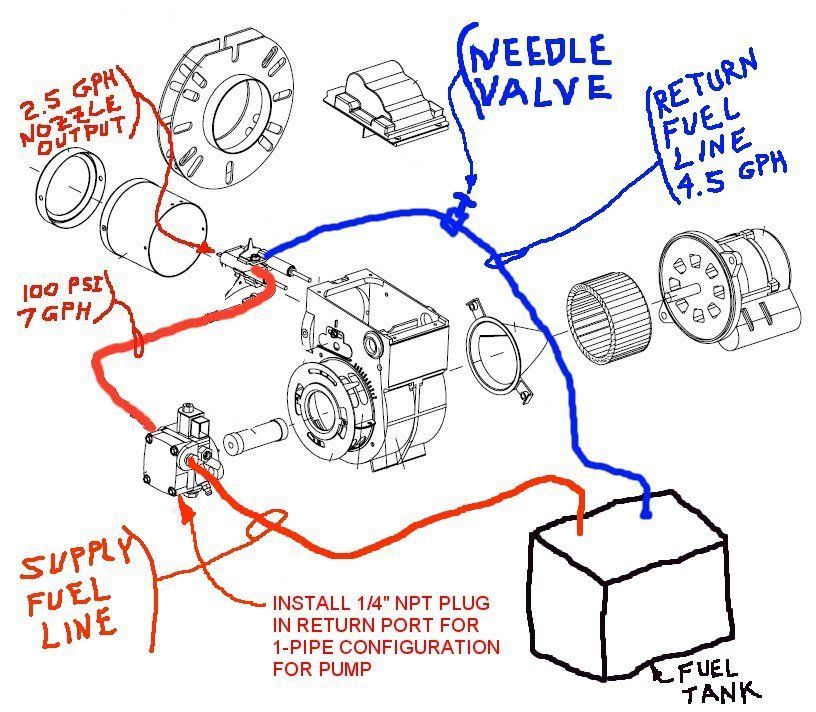I have been casting gray iron since 2012, and have tried a variety of fuels and burner types.
I use a siphon nozzle burner with diesel, but am converting to a similar pressure nozzle with gear pump to avoid having to have an air compressor for atomization air.
Cast iron can be melted with propane if you have a sufficiently large tank, or you carefully warm (without overheating) the tank as the gas is being used. The vapor pressure inside of a 20 lb propane take will drop too much as the tank cools, and so it is difficult to maintain enough pressure to melt iron (without tank heating).
I use diesel exclusively since it does not contain heavy metals, and it lights easily with a siphon or pressure nozzle type burner, without using propane.
I have started and run my siphon nozzle burner on diesel at 30 F.
Most I know mix at least 20-30% diesel with their waste oil to assist in starting and operating the burner.
The red hot burner tube type burners don't last long. A siphon and pressure nozzle burner tube run cool to the touch if operated correctly.
It is easy to melt cast iron, brass, bronze, or aluminum using diesel.
Generally a #10 crucible full of iron requires about 1 hour to bring up to pour temperature, which is extimated to be about 2,500 F.
A #10 crucible holds a little less than 30 lbs of iron.
Most folks I know run their oil burners at about 2.7 gal/hr, and the combustion air blower is adjusted to accomodate this fuel flow, using either a variable speed blower motor, or a dump damper to get rid of the excess blower air.
My casting videos are on Vimeo.
I will try to post a link here; hopefully it will work.
Good luck with your metal casting. I must say I really enjoy metal casting, and it creates unlimited opportunities as far as the engines you can make.
Hit the "scroll down" or "load more" at the bottom of the Vimeo page to get to my casting videos.
Note that the Elliot Bay Triple Expansion build videos are by a fellow named Randall Marquis.
The remainder of the videos are mine.
Edited By PatJ on 03/01/2022 08:16:13
Edited By PatJ on 03/01/2022 08:18:14
Edited By PatJ on 03/01/2022 08:18:44
Edited By PatJ on 03/01/2022 08:20:13
Edited By PatJ on 03/01/2022 08:20:32
Edited By PatJ on 03/01/2022 08:21:13
Edited By PatJ on 03/01/2022 08:23:41
Edited By PatJ on 03/01/2022 08:24:32
Luker.












